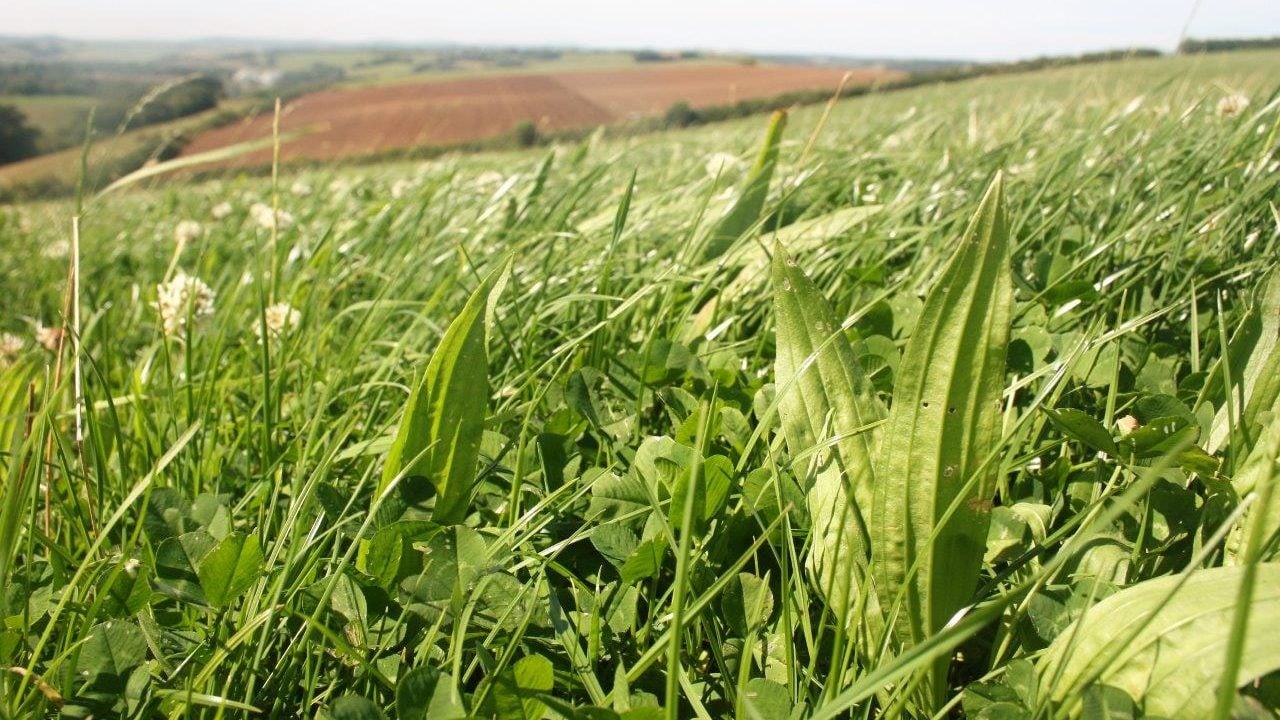Advantage Beef Programme


Table: Performance of cattle in the UCD/ABP grazing trial
The performance of the most recent batch of dairy-beef cattle in an ongoing ABP/University College Dublin (UCD) research trial has shown that cattle grazing a multi-species sward are finishing 40 days earlier on average than cattle on a perennial ryegrass (PRG) sward.
The research project focusing on the performance of dairy-beef cattle on different sward types has been running in conjunction with ABP Food Group and UCD since 2019.
UCD’s Prof. Tommy Boland explained that the study consists of three farms, each comprising of 8Ha and each supporting 20 livestock units. The cattle used in the trial are all Hereford-cross steers (bullocks) with 20 finishers and 20 calves on each farm.
Each of the three farms have a different type of pasture and different levels of chemical fertiliser are applied. The three sward types and treatments are as follows:
- PRG at 210kg N/Ha/year;
- PRG/white clover (WC) at 90kg N/ha/year;
- Multi-species sward (MSS) (PRG, Timothy, WC, red clover (RC), chicory and plantain) at 90kg N/ha/yr.
In December last year, Agriland published the slaughter performance of the cattle grazing the MSS.
The table below compares the average performance of the cattle groups on the three different sward types:
| MSS | PRG | PRG/WC | |
|---|---|---|---|
| Fat score: | 3+ | 3+ | 3+ |
| Confirmation: | O+ | O+ | O+ |
| Carcass weight: | 316kg | 318kg | 316kg |
| Kill out %: | 51% | 51% | 51% |
Commenting on the data, Prof. Boland said: "Our research is showing the average age of slaughter can be reduced by 40 days for cattle grazing MSS when compared to the PRG and the PRG/WC swards. This level of performance is consistent on the MSS."
ABP Food Group's agri-sustainability manager Stephen Connolly said: "We are delighted with the results from the project and we encourage our suppliers to look at the role of clover and multispecies swards to improve on-farm efficiency and lower their on-farm costs."
Prof. Boland continued: "All animals grew at 1.5kg/day during the housed period, which is excellent performance for this type of animal.
"The key to the system's success is an excellent calf-rearing programme, and then a simple but technically efficient leader-follower grazing system."
Commenting on the issues the trial faced in 2024, the UCD researcher said: "2024 presented challenges from a grazing perspective due to cold conditions limiting grass growth in the first half of the grazing season which reduced herbage production across the board by 8-10%.
"The big difference in 2024 performance was the reduced performance of the PRG/WC sward compared to previous years, reflecting the difficult early-season conditions for clover growth and associated nitrogen fixation
Prof. Boland explained that the only difference between the three groups is the forage they are offered.
Once an animal enters the study, it is allocated to one of the three forage types and then receives that forage – either grazed or as silage – for the duration of their life.
All groups receive 1.25kg concentrate supplementation during the first winter, with this stopping six weeks before turnout and then being finished on a 50:50 forage to concentrate diet.
“Over the years of the study we are seeing the MSS yield 25% more herbage than the PRG with the WC intermediate between the two. The RC component of the MSS is the engine driving this enhanced herbage yield and we have seen good persistence of the RC under our leader-follower grazing system.
“Both plantain and chicory have had to be rejuvenated in the MSS sward via over-sowing after silage harvest (50% of the farm is closed for silage in mid-late May and the area closed for silage is rotated each year).
“We are aiming for 20-25% of the herbage DM (dry matter) coming from herbs and another 25-30% of the herbage DM yield coming from legumes. “